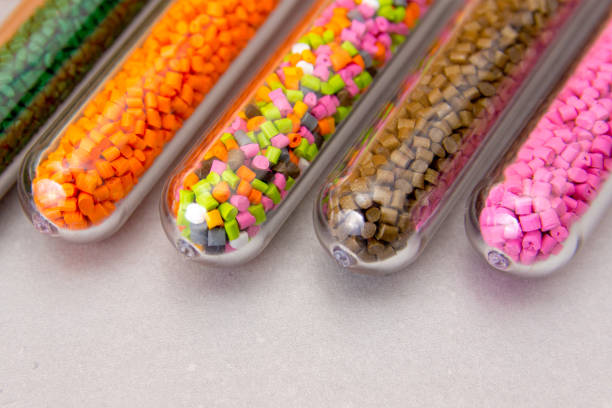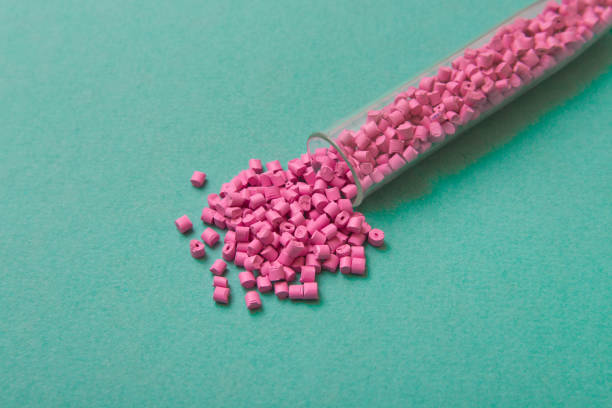In today's era of heightened environmental awareness, the cosmetics industry is increasingly embracing sustainable practices, including the adoption of eco-friendly packaging solutions. Among these, Post-Consumer Recycled Polypropylene (PCR PP) stands out as a promising material for cosmetic packaging. Let's delve into why PCR PP is a smart choice and how it differs from other green packaging alternatives.

Why Use PCR PP for Cosmetic Packaging?
1. Environmental Responsibility
PCR PP is derived from discarded plastics that have already been used by consumers. By repurposing these waste materials, PCR PP packaging significantly reduces the demand for virgin plastic, which is typically derived from non-renewable fossil fuels like oil. This not only conserves natural resources but also mitigates the environmental impact associated with plastic production, including greenhouse gas emissions and water consumption.
2. Reduced Carbon Footprint
Compared to the production of virgin plastic, the manufacturing process of PCR PP involves significantly lower carbon emissions. Studies show that using PCR PP can reduce carbon emissions by up to 85% compared to traditional methods. This makes it an attractive option for brands looking to minimize their carbon footprint and contribute to a more sustainable future.
3. Compliance with Regulations
Many countries, particularly in Europe and North America, have implemented regulations aimed at promoting the use of recycled materials in packaging. For instance, the Global Recycled Standard (GRS) and the European standard EN15343:2008 ensure that recycled products meet strict environmental and social criteria. By adopting PCR PP packaging, cosmetic brands can demonstrate their compliance with these regulations and avoid potential fines or taxes associated with non-compliance.
4. Brand Reputation
Consumers are increasingly conscious of the environmental impact of the products they buy. By choosing PCR PP packaging, cosmetic brands can showcase their commitment to sustainability and environmental responsibility. This can enhance brand reputation, attract eco-conscious customers, and foster loyalty among existing ones.

How Does PCR PP Differ from Other Green Packaging Types?
1. Source of Material
PCR PP is unique in that it is sourced exclusively from post-consumer waste. This sets it apart from other green packaging materials, such as biodegradable plastics or those made from natural resources, which may not necessarily be recycled consumer waste. The specificity of its source underscores PCR PP's circular economy approach, where waste is transformed into valuable resources.
2. Recycled Content
While various green packaging options exist, PCR PP packaging stands out for its high recycled content. Depending on the manufacturer and production process, PCR PP can contain anywhere from 30% to 100% recycled material. This high recycled content not only reduces the environmental burden but also ensures that a significant portion of the packaging is derived from waste that would otherwise end up in landfills or oceans.
3. Performance and Durability
Contrary to some misconceptions, PCR PP packaging does not compromise on performance or durability. Advances in recycling technology have enabled the production of PCR PP that is comparable to virgin plastic in terms of strength, clarity, and barrier properties. This means that cosmetic brands can enjoy the benefits of eco-friendly packaging without sacrificing product protection or consumer experience.
4. Certifications and Standards
PCR PP packaging is often certified by reputable organizations such as GRS and EN15343:2008. These certifications ensure that the recycled content is accurately measured and that the production process adheres to strict environmental and social standards. This level of transparency and accountability sets PCR PP apart from other green packaging materials that may not have undergone similar rigorous scrutiny.
Conclusion
In conclusion, PCR PP for cosmetic packaging represents a smart and responsible choice for brands looking to reduce their environmental impact while maintaining product quality and consumer satisfaction. Its unique combination of environmental benefits, high recycled content, and performance capabilities sets it apart from other green packaging alternatives. As the cosmetics industry continues to evolve towards sustainability, PCR PP packaging is poised to play a pivotal role in shaping a more eco-friendly future.
Post time: Aug-09-2024
